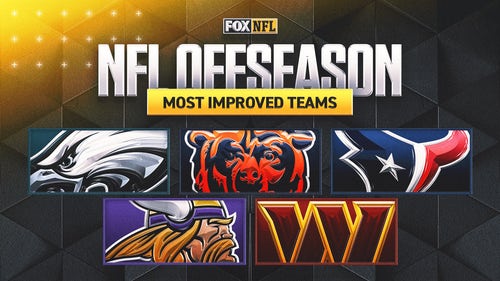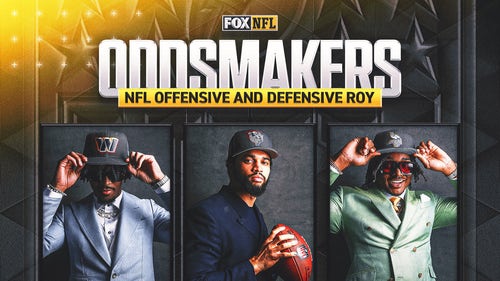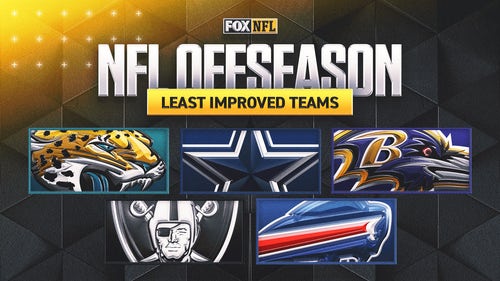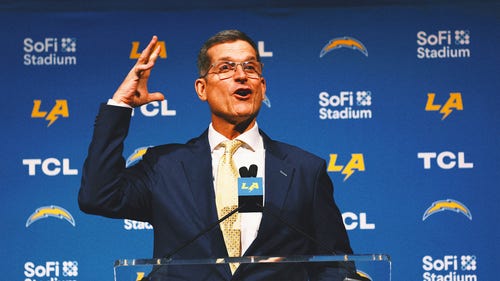
Explaining proposed CBA, if it passes
Should the NFL Players Association approve a new Collective Bargaining Agreement, the NFL will undergo major procedural changes for the 2011 season and beyond. Here is a question-and-answer look at what fans can expect:
Q: What is the status of the 18-game regular season?
A: The current format (16 regular-season and four preseason games) will remain for at least the next three seasons. The NFL and NFLPA can negotiate the implementation of an 18-game slate starting with the 2014 campaign.
Q: How soon will training camps open?
A: The NFL has designated Wednesday as the first day they can begin for all teams, but there will be plenty of off-field activity before then. Teams can open for offseason workouts and classroom instruction starting Saturday. But teams will not open their doors for players to report unless the NFLPA's 32-member board (one from each club) advises payers to approve the CBA and vote to recertify as a union.
Such an action will require approval from a simple majority of the league’s 1,900-plus players. Details of the voting procedure remain uncertain.
“We expect that we will have a fully approved and ratified agreement on a timely basis,” NFL lead negotiator Jeff Pash said after Thursday night’s CBA announcement. “If that doesn’t happen, obviously we’ll have to consider what to do next.”
That would likely mean the reinstitution of the player lockout.
NFLPA executive director DeMaurice Smith said Thursday night that there was “no agreement between the NFL and the players at this time.” Clearly, the two sides have remaining issues that must be resolved or the work stoppage could quickly resume.
Q: How will free agency work?
A: The word “tampering” won’t be part of the NFL vernacular in 2011. Even without a finalized CBA, the NFL will allow teams to begin negotiating with all pending free agents — including those from other teams — starting at 2 p.m. ET Saturday. The same goes for undrafted college free agents. Clubs also can discuss trades amongst themselves and player agents. No signings or trades, though, can be consummated until Wednesday provided the NFLPA recertifies and approves the CBA.
Teams can re-sign their own players and 2011 draft picks starting Saturday.
Unlike in 2010, only four credited NFL seasons are required for players to become eligible for unrestricted free agency. Restricted free agents (those not under contract who have three accrued NFL seasons) have until Aug. 12 to sign an offer sheet with another team with a matching deadline of Aug. 16. Any drafted rookie who doesn’t sign with his respective club by Aug. 12 cannot be traded in 2011. His rights will remain the property of that franchise through the start of the 2012 draft.
Players under contract who decide to holdout at the start of training camp must report by Aug. 9 to receive an accrued season toward free agency. That is a much smaller window than in previous seasons when players only needed to report for the final six games for an accrued season.
Teams can continue to use franchise and transition tags like in the previous CBA. Base salaries will now be determined by a percentage of the salary cap rather than the average of the five highest-paid players at their respective position.
Q: How will the salary cap system work this season?
A: The cap for player salaries will stand at roughly $120.4 million. Teams must spend 99 percent of that amount (about $119 million) for the 2011 season, which is a much higher rate than in the previous CBA. The same 99 percent figure stands for the 2012 campaign.
Q: Will there be a rookie wage scale?
A: Yes, but some early picks will be allowed to test the free-agent market quicker than in the past.
All first-round selections can sign a contract no longer than four years in length. Teams will have an option to extend the contract for a fifth year but must provide notice of that intention before the players’ fourth season begins. Pash said there will be a two-tiered fifth-year compensation system for players drafted between Nos. 1 and 10 and Nos. 11 and 32.
“It will be at a fixed but substantial price,” Pash said.
Players drafted between rounds two and seven will receive four-year contracts. Undrafted college players can sign three-year deals. There also will be substantial changes to the overall rookie salary pool that should prevent the massive contracts being signed by recent early picks like St. Louis quarterback Sam Bradford, who received a six-year deal with $50 million guaranteed.
“This is a much more tightly drawn system,” Pash said. “There is an absolute ceiling on the number of dollars that can be paid in any one draft class, which was not the case before. There are agreed upon limitations on what kind of contract clauses can be written so you don’t have people evade the rookie pool like in the old system. But it preserves the key thing from what we were told was the key thing for the players — mainly the right to continue individually to negotiate compensation within that system.”
The savings from rookie salaries will be used to fund retired player benefits and performance-based pay bonuses for veterans.
Q: Will the personal conduct policy remain in place and can NFL commissioner Roger Goodell suspend players who ran afoul of it during the lockout?
A: Yes. That could be bad news for players who were arrested during the offseason like Tennessee wide receiver Kenny Britt and two repeat offenders who play for Cincinnati (cornerback Pacman Jones and running back Cedric Benson).
“Violations of law are covered by the personal conduct policy,” Pash said. “We believe that policy remains in effect and the commissioner’s authority is undiminished by this agreement.”
Q: What is the status of the NFL’s drug-testing program?
A: Until the NFLPA re-forms as a union, the NFL cannot collectively bargain for a drug-testing program with the players. If/when that happens, Pash is optimistic that a revamped policy will be adopted that includes “some improvements, strengthening, and procedural and administrative improvements that the players were looking for.” The NFL had pushed to test for human growth hormone as part of the new CBA.
Q: How will retired players benefit from the new CBA?
A: The NFL and NFLPA will pledge between $900 million and $1 billion over the next 10 years to fund additional benefits. That includes $620 million to create a “Legacy Fund” to improve pensions for those who played before the 1993 season when the first CBA with a far better retirement plan was adopted. Another $50 million a year will jointly fund medical research, health-care programs and NFL/NFLPA charities.
Current players also could retire healthier under new guidelines that will greatly limit contact during practices both in and out of season. No practices in pads will be allowed for the first three days of 2011 training camps.
There will be more off-days for players and a five-week reduction in offseason workout programs. Current players will have the chance to remain in the NFL’s medical plan for life after retiring. A player also could collect as much as $1.5 million of their contract if suffering a career-ending injury.
Q: How will revenue sharing between the teams work?
A: In hopes of making it easier for smaller-market teams to meet the new salary spending requirements, Pash said team owners have agreed to a system that would be based upon local revenue.
“It addresses more of the clubs that are on top of the revenue scale,” Pash said. “It will be a pro rata type of funding rather than what we had in the old system where if you ranked in a certain area you would pay this much, this much and this much. It’s more finely tailored to individual clubs.
“In the old system, you were eligible if you had player costs that were greater to or equal to 65 percent of your revenue. Here, that’s going to go down to 63 percent beginning in 2013. There’s greater sharing, if you will, in that respect and clubs will have greater opportunities to narrow the disparities.”
NFL revenue sharing was a major discussion among team owners Thursday before they approved the CBA.
Q: How long will the current CBA last?
A: It is a 10-year agreement that runs through the 2021 college draft. There are no clauses that allow for either party to end the CBA early like in the previous pact. Messy labor disputes like the one that has transpired for four-plus months also will no longer be settled in court but through neutral arbitrators agreed upon by both parties.
“We’re going to be bound together,” Pash said. “It’s almost more than a marriage.”
Provided the league isn’t left at the altar by an NFLPA rejection of the CBA.















































































































































